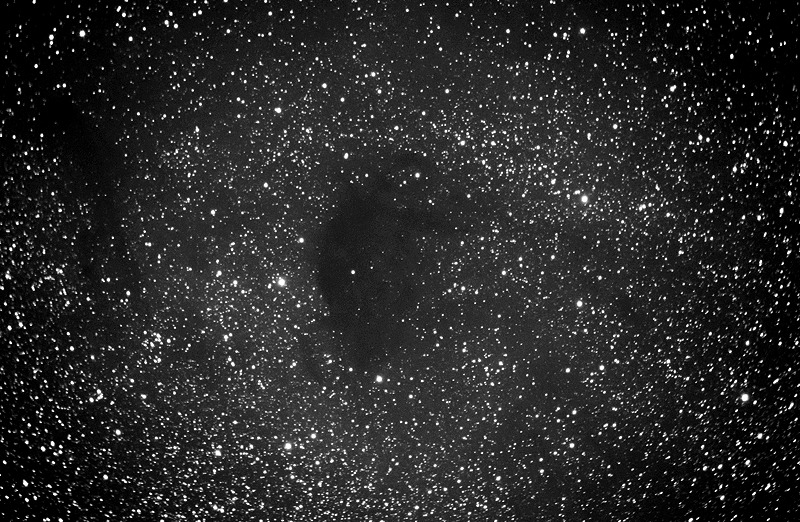Lobster Nebula, Cat's Paw Nebula, Barnard 92 dark nebula,
Saturn, Jupiter
Posted: 3 September 2021
Had 0.9" rain overnight Tuesday, 31 August, to early Wednesday morning, 1 September 2021. Cloudy skies continued until Thursday, 2 September.
|
Open: Thursday, 2 September 2021, 1829 MST Temperature: 88°F |
Session: 1658 Conditions: Mostly clear |
Equipment:
12" f/8 LX600 w/StarLock
2" 24mm UWA eyepiece
Focal Reducer
2" UHC Filter
2" 4X Powermate
Camera:
D850 DSLR
Upon arrival at the observatory I removed the Dome Cover. I then relaxed on the observatory patio bench for a few minutes while waiting for the Sun to set.
1848 MST: sunset.
1850 MST: LX600 ON, StarLock OFF, High Precision OFF.
Viewed the planets Venus, then Mercury, 102X. Both planets were near half phase.
Returned to the bench for awhile.
1914 MST: viewed the planet Saturn, 102X. Two moons were visible.
Then prepared the D850 DSLR for Deep Sky Object (DSO) imaging.
Relaxed on the bench. I enjoyed watching the stars come out. Humidity was pretty high at 53%. My logbook paper was getting slightly damp.
2000 MST: back inside the observatory. Mounted the D850 DSLR at prime focus + focal reducer + UHC filter, focused on the star Antares, and locked the 12" primary mirror.
2009 MST: StarLock ON.
Imaged these two nebulae, StarLock autoguided, 5 minutes, ISO 12800, White Balance 5560K. Images slightly cropped.
NGC6357 (Lobster Nebula)

NGC6334 (Cat's Paw Nebula)

2031 MST: Wi-Fi ON.
Used SkySafari 6 Pro to GOTO the next imaging target. Took this StarLock autoguided image (Black-and-White), 5 minutes, ISO 12800, WB 5560K.
Barnard 92 (dark nebula)

2041 MST: StarLock OFF, Wi-Fi OFF.
Viewed Barnard 92 (dark nebula), 102X. Nice view.
Viewed Saturn and three of its moons, 102X.
Mounted the D850 DSLR at prime focus + 4X Powermate. Imaged Saturn (1/20sec, ISO 1600, WB Auto, cropped) and Jupiter (1/125sec, ISO 1600, WB Auto, cropped). The Great Red Spot is visible at the lower left of Jupiter's disk.


2106 MST: clouds were increasing from the southwest.
Viewed Jupiter and four moons, 102X.
Then viewed the following DSOs, 102X: M8 (Lagoon Nebula), M16 (Eagle Nebula), M17 (Swan Nebula), and M20 (Trifid Nebula).
2117 MST: LX600 OFF.
2125 MST: took a Sky Quality reading and reported the result to Globe at Night. While outside of the observatory I noticed that the observatory walls were very wet with dew.
|
Close: Thursday, 2 September 2021, 2134 MST Temperature: 70°F, Humidity 70% |
Session Length: 3h 05m Conditions: Mostly clear, SQM 20.90 |
My SkyShed POD Dome Cover review has been posted.
Important announcement: American Astronomical Society (AAS) Journals Will Switch to Open Access.
Comments are welcome using Email. Twitter users can use the button below to tweet this report to their followers. Thanks.
Cassiopeia Observatory Home Page
Copyright ©2021 Michael L. Weasner / mweasner@me.com
URL = http://www.weasner.com/co/Reports/2021/09/03/index.html
